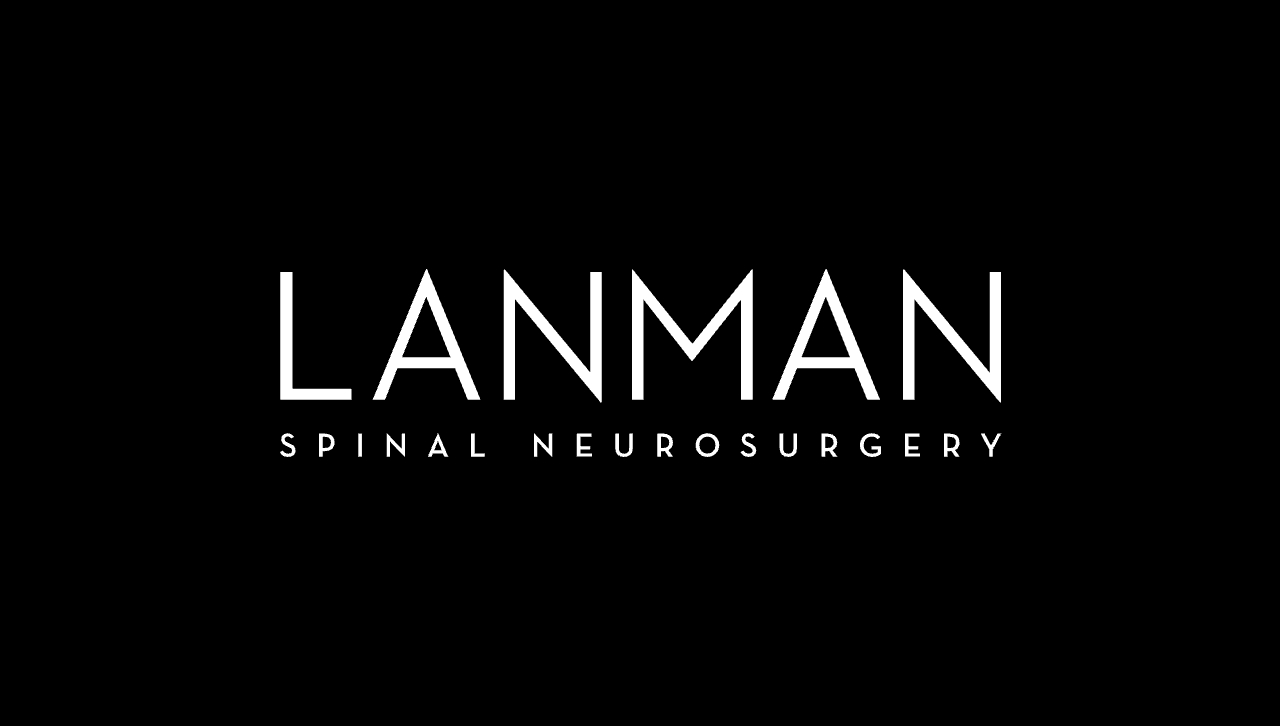Motion-preserving spine surgery is an advanced treatment option designed to address spinal conditions while preserving the natural movement of the spine. Unlike traditional spinal fusion, which limits mobility by permanently fusing vertebrae, these innovative procedures maintain flexibility, reduce pain, and support faster recovery. Dr. Todd Lanman specializes in cutting-edge, minimally invasive techniques that offer long-term relief without compromising motion.
Understanding Motion-Preserving Spine Surgery
Spinal fusion has been a common surgery for back problems for a long time. In spinal fusion, two or more bones in your spine (vertebrae) are joined together. Think of it like welding two pieces of metal together – they become one solid piece. This stops movement between those bones. While it can help with pain, it also has some downsides. It can put extra stress on the parts of your spine above and below the fusion, leading to those areas wearing out faster. This is called adjacent segment disease. Fusion also makes your back less flexible.
Motion-preserving surgery is a different approach. It fixes the problem in your spine while keeping your spine as flexible as possible. There are different types of motion-preserving surgeries:
- Artificial disc replacement: The damaged disc (the cushion between the bones in your spine) is replaced with an artificial one that allows movement.
- Facet joint replacement: The facet joints (small joints in the back of your spine that help with movement) are replaced with artificial ones.
- Dynamic stabilization: Special devices are used to support your spine while still allowing some movement.
- Interspinous implants: These are small devices placed between the spinous processes (the bony bumps you feel along your spine) to help reduce pain and keep the spine stable.
With artificial disc replacement, the damaged disc is removed, just like in spinal fusion. But instead of fusing the bones together, a new, artificial disc is put in its place. This new disc is designed to move like a natural disc.
Conditions Treated with Motion-Preserving Spine Surgery
Motion-preserving spine surgery can help people with long-lasting back pain, nerve problems, and limited movement caused by spine issues such as:
- Degenerative disc disease: This is when the discs in your spine break down over time due to aging and wear and tear.
- Herniated disc: This happens when the soft inside of a spinal disc pushes out through a crack in the outer layer. It’s like a jelly donut where the jelly is squeezing out.
- Spinal stenosis: This is a narrowing of the spaces in your spine, which can put pressure on your spinal cord and nerves.
- Spondylolisthesis: This is when one of the bones in your spine slips forward over the bone below it.
Benefits of Motion-Preserving Spine Surgery
Patients opting for motion-preserving spine surgery can expect several key benefits:
- Preservation of Spinal Mobility: Unlike fusion, these procedures retain movement in the treated spinal segment.
- Reduced Stress on Adjacent Discs: Fusion surgery often increases stress on neighboring discs, while motion-preserving techniques reduce the risk of future problems.
- Minimally Invasive Procedures for Faster Recovery: Smaller incisions and advanced methods lead to less pain and quicker recovery times.
- Long-Term Pain Relief and Restored Function: Many patients experience lasting pain relief while maintaining an active lifestyle.
Types of Motion-Preserving Spine Surgery
Several effective surgical options help preserve spinal motion while treating common conditions:
- Artificial Disc Replacement: Replacing a damaged disc with a prosthetic disc that mimics natural movement.
- Dynamic Stabilization Systems: Implants that provide support while allowing controlled motion.
- Facet Joint Replacement: Replacing worn facet joints to restore mobility.
The Procedure: What to Expect
What happens during the surgery depends on which type of motion-preserving procedure you’re having. Here’s what you can expect with artificial disc replacement, which is one of the more common procedures:
Pre-operative Preparation
Before the surgery, you’ll have a complete checkup, including:
- Talking about your medical history, what symptoms you’re having, and any worries you have.
- A physical exam and blood tests to make sure you’re healthy enough for surgery.
- X-rays, MRI (magnetic resonance imaging), or CT (computed tomography) scans to get a good look at your spine.
Dr. Lanman will create a treatment plan just for you. He might suggest trying other things first, like physical therapy or pain medicine. He might also recommend changes to your lifestyle to improve your health, like gentle exercises such as swimming or cycling.
The Surgical Procedure
Dr. Lanman uses a minimally invasive approach, which means smaller cuts and less damage to the surrounding tissues. Here’s what usually happens:
- Anesthesia: You’ll be given medicine to put you to sleep so you won’t feel anything during the surgery.
- Incision: A small cut (about an inch long) is made, either in your neck for cervical (neck) artificial disc replacement or in your belly for lumbar (lower back) artificial disc replacement.
- Disc Removal: The damaged disc is completely removed from between the bones in your spine.
- Space Preparation: The space where the disc was is adjusted to the correct height, and the surfaces of the bones are prepared for the new disc.
- Implant Insertion: Using X-rays to guide him, Dr. Lanman puts the artificial disc into the prepared space between the bones. The procedure usually takes about 1-2 hours.
Post-operative Care
After the surgery:
- You’ll wake up in a recovery room.
- Most people go home within 23 hours after surgery.
- You’ll get instructions on how to care for your incision and supplies for wound care.
- You’ll be given a rehabilitation program, including physical therapy and exercises, to help you recover and get stronger.
Because Dr. Lanman uses a minimally invasive approach, you’ll likely have less pain, less bleeding, and a faster recovery compared to traditional open surgery.
Recovery After Motion-Preserving Spine Surgery
Physical therapy is very important for your recovery. It usually starts 2-4 weeks after surgery and continues for 6-12 weeks, with the exercises getting harder over time.
A typical rehabilitation program involves:
- Initial phase (1-2 weeks): Gentle exercises to get your blood flowing and improve your mobility. This includes walking, stretching your legs, and deep breathing exercises.
- Intermediate phase (2-12 weeks): Exercises to build strength and improve flexibility. This might include swimming, riding a stationary bike, and light weightlifting with supervision.
- Advanced phase (3-6 months): The goal is to get you back to the activity level you were at before surgery. You’ll gradually return to sports or more strenuous activities, depending on the type of surgery you had.
Risks and Complications of Motion-Preserving Spine Surgery
Motion-preserving spine surgery is generally safe, but it’s important to know about the possible risks. These problems can usually be managed with careful patient selection and an experienced surgeon.
Possible complications include:
- Problems with the device, such as it moving, wearing out, or sinking into the bone.
- The parts of the spine next to the surgery wearing out faster (adjacent segment degeneration).
- The facet joints wearing out (facet joint degeneration).
- Infection or blood clots.
- Nerve damage or ongoing pain.
- The device can sink into the bone, often because it wasn’t the right size (Subsidence).
- The device can move out of place (migration).
- The parts of the artificial disc can wear out over time, though this only happens in about 1 on 100 cases over 20 years.
Dr. Lanman takes every precaution to minimize these risks and ensure optimal outcomes.
Why Choose Dr. Todd Lanman for Motion-Preserving Spine Surgery?
Lanman Spinal Neurosurgery, led by Dr. Todd H. Lanman, is a global leader in motion-preserving spine surgery offers cutting-edge solutions to help you maintain mobility and improve your quality of life.
Expertise in Advanced Spine Surgery
Dr. Todd Lanman specializes in innovative techniques like artificial disc replacement and Restorative Motion Surgery, which restore flexibility and reduce the need for traditional fusion procedures. With decades of experience, Dr. Lanman is a pioneer in reversing prior fusions and preserving spinal motion.
Personalized Treatment Plans
Every treatment at Lanman Spinal Neurosurgery is tailored to the patient’s specific condition and lifestyle goals. Using a comprehensive approach, including the proprietary “4D Health Process,” Dr. Todd Lanman considers factors like nutrition, exercise, and long-term health to deliver optimal outcomes.
State-of-the-Art Technology
Lanman Spinal Neurosurgery utilizes the latest advancements in spinal care:
- Cutting-edge artificial disc replacement devices
- Advanced imaging and surgical planning tools for precision
- Access to groundbreaking technologies through clinical trials
Choosing Dr. Todd Lanman means benefiting from unparalleled expertise, personalized care, and advanced technology to restore motion and improve your quality of life. Contact Dr. Todd Lanman today to schedule your consultation!
Frequently Asked Questions About Motion-Preserving Spine Surgery
Who is a good candidate for motion-preserving spine surgery?
Patients with degenerative disc disease, herniated discs, or mild spinal instability are ideal candidates.
How long does the procedure take?
Typically, the procedure lasts between 1-3 hours, depending on the technique.
What is the success rate of motion-preserving spine surgery?
Studies show high success rates, with most patients experiencing significant pain relief and restored mobility.
Is artificial disc replacement better than spinal fusion?
For many patients, artificial disc replacement offers long-term benefits by maintaining natural spinal movement and reducing stress on adjacent discs.








